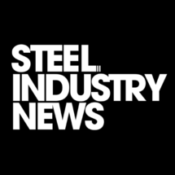✅ Key Takeaways
✅ 54.2% of the steel community expects prices to rise by year-end 2025, with 45.1% predicting a moderate increase to $875-$999 per ton, signaling cautiously optimistic market sentiment.
✅ Only 18.8% anticipate declining prices, indicating strong confidence in market fundamentals despite ongoing economic uncertainties and trade policy challenges.
✅ Community pricing polls serve as valuable leading indicators, combining real-world expertise from buyers, sellers, and analysts to help forecast market direction.
Introduction: The Power of Community Sentiment in Steel Pricing Predictions
In the dynamic and often unpredictable world of steel markets, understanding where prices are headed requires more than just analyzing spreadsheets and economic reports. It demands insight from the people who live and breathe the industry every day – the buyers negotiating contracts, the sellers managing inventory, the analysts tracking every market fluctuation, and the executives making million-dollar decisions based on price forecasts. This is where community polls become invaluable tools for gauging market sentiment and predicting future price movements.
The latest Steel Industry News community poll, conducted in late October 2025, gathered responses from 448 industry professionals about their expectations for hot-rolled coil prices at the end of 2025. The results paint a picture of cautious optimism, with a majority of respondents anticipating price increases despite persistent market uncertainties. This level of community participation in pricing discussions reflects the collaborative nature of modern steel markets, where shared knowledge and collective wisdom often prove more reliable than isolated forecasts.
Understanding steel pricing dynamics through community engagement offers several advantages over traditional forecasting methods. First, poll participants bring diverse perspectives from across the value chain – from raw material suppliers to end-users in construction and automotive sectors. Second, these professionals base their predictions on real-time market conditions they observe daily, including order books, lead times, and customer behavior patterns that may not yet appear in official statistics. Third, community polls capture sentiment and confidence levels that quantitative models struggle to measure, providing crucial context for interpreting price trends.

Steel Industry Community Poll results showing 448 votes across four price outlook categories for end of 2025
The pricing landscape for steel in late 2025 sits at a critical juncture. With current hot-rolled coil prices hovering around $875 per ton, the industry faces multiple crosswinds – from infrastructure spending and manufacturing demand on the bullish side, to interest rate pressures and global economic uncertainties on the bearish side. The community’s collective wisdom, as expressed through this poll, becomes a compass for navigating these complex market conditions.
Poll Results Deep Dive: Breaking Down the Numbers
The October 2025 community poll results reveal a market that leans decidedly optimistic, though not exuberantly so. With 448 total votes cast, the distribution tells a nuanced story about where steel industry professionals see prices heading in the final months of 2025.
The four pricing outlook categories received the following support:
- Moderate Increase ($875-$999/ton): 202 votes (45.1%)
- No Change (~$875/ton): 121 votes (27.0%)
- Declining ($775-$875/ton): 84 votes (18.8%)
- Major Rise (over $1,000+/ton): 41 votes (9.2%)

Overall market sentiment from the steel community poll showing majority bullish outlook
The dominance of the “Moderate Increase” category is particularly telling. Nearly half of all poll participants expect prices to rise but remain below the psychologically significant $1,000 per ton threshold. This suggests that industry professionals see positive catalysts for price appreciation – whether from demand growth, supply constraints, or cost pressures – but don’t anticipate the kind of dramatic surge that characterized certain periods in recent years when supply chain disruptions and unprecedented demand sent prices soaring.
When we aggregate the responses into broader sentiment categories, the picture becomes even clearer. Combining the two bullish categories (Major Rise and Moderate Increase) yields 243 votes representing 54.2% of respondents – a clear majority expecting upward price movement. The neutral camp, expecting prices to hold steady around $875 per ton, accounts for 27.0% with 121 votes. Meanwhile, only 18.8% of participants (84 votes) anticipate declining prices, making bearish sentiment the distinct minority view.
| Price Outlook | Price Range | Votes | Percentage | Sentiment |
|---|---|---|---|---|
| Major Rise | $1,000+/ton | 41 | 9.2% | Highly Bullish |
| Moderate Increase | $875-$999/ton | 202 | 45.1% | Moderately Bullish |
| No Change | ~$875/ton | 121 | 27.0% | Neutral |
| Declining | $775-$875/ton | 84 | 18.8% | Bearish |
The pricing ranges themselves deserve closer examination. At the midpoint of each category, we’re looking at potential year-end prices of approximately $1,050 for the major rise scenario, $937 for moderate increase, $875 for no change, and $825 for the declining outlook. This represents a spread of $225 per ton between the most bullish and most bearish views – a significant range that reflects the genuine uncertainty that still exists in the market despite the overall optimistic tilt.
What’s Driving the Bullish Majority? Key Market Factors
The 54.2% bullish sentiment reflected in the community poll doesn’t exist in a vacuum. Several concrete market factors are fueling optimism about steel pricing trajectories as 2025 draws to a close.
Infrastructure spending continues to be a major demand driver across North America. Federal infrastructure programs remain in full deployment mode, with projects requiring substantial steel tonnage moving from planning phases into active construction. This creates a sustained demand baseline that supports price stability and growth. When combined with state and local infrastructure initiatives, the construction sector’s appetite for hot-rolled coil and other steel products remains robust.
Manufacturing activity has shown resilience despite earlier recession concerns. Automotive production, a major steel consumer, has stabilized after supply chain challenges, with manufacturers maintaining steady order books. Industrial equipment manufacturing and heavy machinery sectors are similarly contributing to demand, particularly as businesses invest in production capacity and equipment upgrades. Recent price increases announced by major producers like Nucor and NLMK USA signal that mills are seeing sufficient demand to justify raising prices – a move that wouldn’t be attempted in a weak market environment.
Supply-side dynamics also favor price support. Domestic steel production capacity, while substantial, faces constraints from maintenance schedules, energy costs, and raw material availability. Import competition, traditionally a price-limiting factor, faces ongoing tariff structures including Section 232 duties that maintain a price floor for foreign steel. This means domestic producers have more pricing power than they would in a completely open market.
Raw material costs present another upward pressure on pricing. Iron ore prices, scrap metal values, and energy costs – particularly natural gas for electric arc furnaces – all feed into production expenses. When these input costs rise or remain elevated, steel producers must eventually pass increases along to maintain margins, creating a cost-push element to price appreciation.
The psychological factor shouldn’t be underestimated either. When a majority of industry participants expect prices to rise, this expectation itself can become self-fulfilling. Buyers may accelerate purchases to lock in current prices before anticipated increases, creating near-term demand surges. Sellers may hold inventory longer expecting better pricing ahead. This collective behavior, driven by shared sentiment captured in polls like this one, can directly influence actual market outcomes.
Understanding the Bearish and Neutral Perspectives
While bullish voices dominate the community poll, the 46% of respondents who expect either stable or declining prices represent perspectives that deserve serious consideration. These participants aren’t simply pessimistic – they’re likely focusing on different aspects of the market equation or weighting certain factors more heavily.
The 18.8% expecting price declines to the $775-$875 range are probably emphasizing economic headwinds that could dampen demand. Concerns about interest rates, though they’ve stabilized somewhat, remain elevated by historical standards, which affects construction financing and major capital projects. Global economic growth has been uneven, with key export markets showing weakness that could reduce international steel demand and potentially redirect more foreign steel toward U.S. markets despite tariffs.
Inventory levels along the supply chain might also inform bearish views. If distributors and service centers are well-stocked, near-term buying pressure eases, potentially softening prices. Some analysts watch capacity utilization rates closely – if mills are running below optimal levels, competitive pressure to fill order books can lead to price concessions.
The 27% neutral camp expecting prices to remain around $875 per ton likely see a balance of forces. These respondents may believe that bullish and bearish factors will roughly offset each other, resulting in sideways price movement through year-end. This is actually a sophisticated view – recognizing that while demand remains decent, it’s not strong enough to overcome supply availability and competitive dynamics. The neutral position suggests market equilibrium at current levels, which itself provides valuable information about price sustainability.
It’s important to note that none of these perspectives should be dismissed. Market forecasting is inherently uncertain, and the steel industry has seen numerous instances where minority views proved correct. The value of community polling lies not just in identifying majority sentiment but in understanding the full distribution of views and the reasoning behind different outlooks.
Historical Context: Comparing Current Poll to Previous Community Sentiment
The September 2025 community poll on steel prices revealed a more divided outlook, making the shift toward increased bullishness in the October poll particularly noteworthy. While specific vote distributions from the earlier poll would provide precise comparison points, the general trajectory of sentiment evolution offers insights into how market psychology responds to changing conditions.
What could account for this apparent shift toward more optimistic pricing expectations over just one month? Several possibilities emerge. First, actual price increases announced by major mills like Nucor and NLMK USA in late October may have validated bullish instincts and convinced fence-sitters that upward momentum is real. When leading producers successfully implement price increases, it often shifts market sentiment by demonstrating that demand can absorb higher prices.
Second, economic data released between the two polls may have eased recession concerns that were weighing on earlier sentiment. Employment figures, GDP growth rates, or sector-specific indicators like construction spending and manufacturing PMI data could have provided reassurance about demand sustainability.
Third, the community itself may be responding to supply-side developments – perhaps production disruptions, maintenance outages, or trade policy changes that tightened available supply and strengthened the case for higher prices. The steel market is highly reactive to supply-demand balance shifts, and even modest changes can significantly impact price expectations.
The evolution of poll results over time creates a valuable dataset for understanding market dynamics. By tracking how sentiment changes month to month, industry participants can identify inflection points, gauge the durability of trends, and assess whether consensus views are strengthening or fracturing. This temporal dimension adds depth to single-poll snapshots.
What These Poll Results Mean for Steel Market Stakeholders
Different segments of the steel industry should interpret these community poll results through the lens of their specific roles and needs.
For buyers – whether construction companies, manufacturers, or fabricators – the 54.2% bullish sentiment serves as a warning signal to evaluate purchasing strategies carefully. If the majority proves correct and prices do increase toward the $875-$999 range or higher, buyers who waited may face higher costs. This doesn’t necessarily mean panic buying, but it does suggest that locking in contracts or forward positions at current prices around $875 per ton could prove wise. However, buyers should also remember that 46% expect stable or lower prices, so aggressive over-buying carries risk if the minority view prevails.
For sellers and producers, the poll results provide confidence that market conditions may support announced price increases. The strong bullish sentiment makes it more likely that buyers will accept higher quotes rather than wait for potential price declines. However, the concentration of votes in the “moderate increase” category rather than “major rise” suggests that pricing power has limits – pushing too aggressively above $1,000 per ton may encounter significant buyer resistance.
The Broader Value of Community Polls in Price Discovery
Beyond this specific poll’s results, the growing importance of community engagement in steel pricing discussions reflects a broader industry evolution. Traditional price discovery relied heavily on proprietary transactions, producer announcements, and published indices. While these remain crucial, community polls add a democratic, transparent layer that aggregates dispersed knowledge across the value chain.
Poll participation itself signals industry engagement and the desire for shared market intelligence. When 448 professionals take time to record their price expectations, they’re contributing to a collective knowledge base that benefits all participants. This democratization of market information helps level the playing field between large sophisticated buyers and smaller players who may lack extensive market research resources.
The predictive accuracy of such polls will become clearer as year-end 2025 approaches and actual prices can be compared to poll expectations. Over time, tracking poll accuracy builds credibility and refines methodologies. If community polls consistently prove directionally correct, they’ll become increasingly influential in market decision-making.
Conclusion: Cautious Optimism Defines the Steel Pricing Outlook
The October 2025 Steel Industry News community poll delivers a clear message: the steel industry is cautiously optimistic about pricing as the year draws to a close. With 54.2% of 448 respondents expecting price increases, the bullish camp holds a decisive advantage over the 18.8% anticipating declines. The concentration of votes around moderate increases to the $875-$999 range rather than dramatic surges above $1,000 per ton reflects measured confidence rather than irrational exuberance.
This community sentiment aligns with observable market conditions – infrastructure spending supporting demand, producer price increase announcements, and supply-side constraints providing price support. However, the substantial minority expecting stable or lower prices reminds us that uncertainty remains, with economic headwinds and competitive pressures still capable of shifting the trajectory.
The true value of this poll extends beyond simply predicting where prices will land. It captures the collective intelligence of industry professionals, provides a sentiment benchmark for decision-making, and creates a feedback loop where shared expectations influence actual market behavior. As steel buyers evaluate purchasing timing, producers set pricing strategies, and investors assess industry prospects, the insights from 448 industry voices offer crucial guidance.
As we move toward year-end 2025, one question remains: Will the optimistic majority prove correct, or will the bearish minority who see declining prices have the last word? Track ongoing steel market developments and participate in future community polls to add your voice to this crucial industry conversation. Your perspective matters in shaping our collective understanding of where steel prices are headed.
Disclaimer
The content provided in this article is for general informational purposes only and does not constitute financial, legal, or professional advice. Readers should seek consultation with qualified professionals before making any financial, investment, or legal decisions. We disclaim any liability for losses, damages, or adverse outcomes resulting from decisions made based on the information presented herein.
Check out our most recent articles below:
- Steel Industry News October 2025 Community Poll Reveals Optimistic Pricing Outlook
- Nucor and NLMK USA Announce Price Increases: An In-Depth Market Review
- Steel Price Analysis: Understanding Current Market Dynamics
- Dodge Momentum Index Inches Up For the 5th Consecutive Month
- Nucor Holds Steel Pricing Steady Two Months Straight
📬 Enjoying this article? Do not miss the next one.
SUBSCRIBE below to the Steel Industry News email newsletter to get the latest updates delivered straight to your inbox. Includes a comprehensive reporting of all key topics impacting the steel industry. 🌍The Most Recent Steel News Reports – in one easy-to-read weekly format
🔐 Annual Plan: Just $126/year – that’s 7+ months free (a 58% discount compared to monthly)








